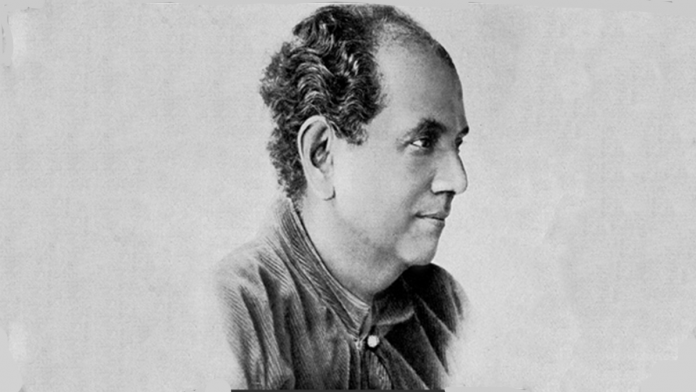Indian Heritage & Culture
Abanindranath Tagore
- 07 Aug 2020
- 4 min read
Why in News
The National Gallery of Modern Art (NGMA), New Delhi has organised a virtual tour titled “The Great Maestro - Abanindranath Tagore” to commemorate the 150th birth anniversary of Abanindranath Tagore on 7th August 2020.
Key Points
- Birth: Abanindranath Tagore took birth in a family of Tagores of Jorasanko in Kolkata in 1871.
- He was a nephew of Rabindranath Tagore.
- Abanindranath Ideology:
- In his youth, Abanindranath received training in European and Academic style from European artists.
- However, during the last decade of the 19th century, he developed distaste for the corporeality of European naturalism (which represented things closer to the way one sees them - inspired by the principles of natural science).
- Mughal miniatures influenced his visual ideas deeply.
- Another source of inspiration came from the visit of the Japanese philosopher and aesthetician Okakura Kakuzo to Kolkata in 1902.
- He leaned towards painting images with historic or literary allusions.
- Prominent Figure of Modern Indian Art:
- Towards the end of the nineteenth century, a stronger connection was established between art and nationalism. Many painters tried to develop a style that could be considered both modern and Indian.
- Raja Ravi Varma was one of the first artists who tried to create a style that was both modern and national.
- He mastered the Western art of oil painting and realistic life study, but painted themes from Indian mythology.
- However, in Bengal, a new group of nationalist artists gathered around Abanindranath Tagore.
- They rejected the art of Ravi Varma as imitative and westernised, and declared that such a style was unsuitable for depicting the nation’s ancient myths and legends.
- They felt that a genuine Indian style of painting had to draw inspiration from non-Western art traditions, and try to capture the spiritual essence of the East.
- Bengal School of Painting:
- It is also called the Renaissance School or the Revivalist School, as it represented the first modern movement of Indian art.
- It rediscovered the glories of Indian art and consciously tried to produce what it considered a truly Indian art inspired by the creations of the past.
- Its leading artist was Abanindranath Tagore and its theoretician was E.B. Havell, the principal of the Calcutta School of Art.
- They broke away from the convention of oil painting and the realistic style, and turned for inspiration to medieval Indian traditions of miniature painting and the ancient art of mural painting in the Ajanta caves.
- They were also influenced by the art (wash technique) of Japanese artists who visited India at that time to develop an Asian Art movement.
- Associated Pupils: Nandalal Bose and Kshitindranath Majumdar
- Popular Paintings: Bharat Mata, My Mother, Journey’s End, etc.
- Popular Books: Rajkahini, Nalak, etc.
- Death: He died on 5th December, 1951.
National Gallery of Modern Art
- NGMA was established in 1954, at the Jaipur House, New Delhi.
- It is run and administered as a subordinate office to the Ministry of Culture, Government of India.
- One of its objectives is to acquire and preserve works of modern art from the 1850s onward.




